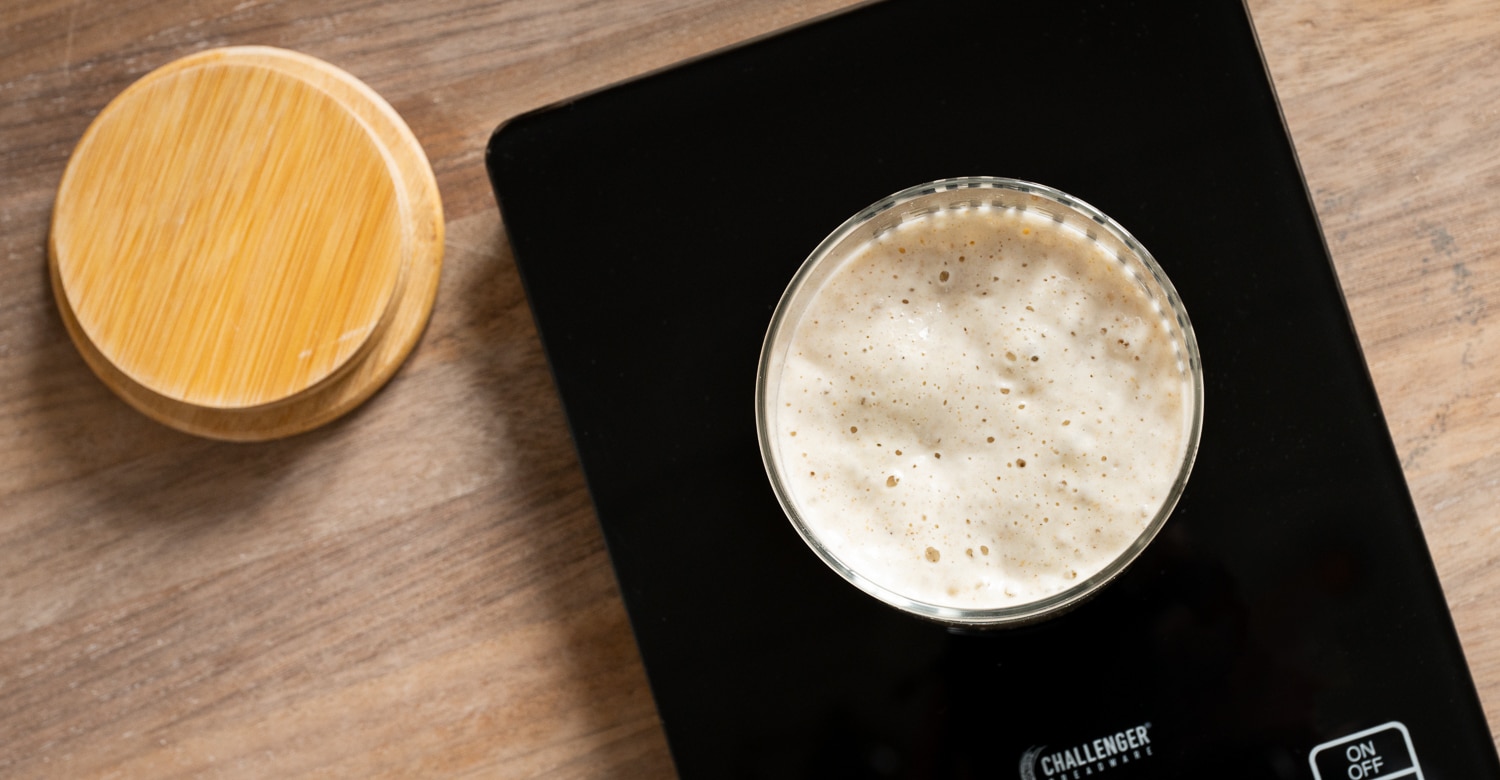
Learning to know when your starter is at its peak and ready to feed is going to take a little time and patience, along with some observation. We’re here to help you learn what to observe, so you’ll be the master of your sourdough starter in no time.
Please email us at techniques@challengerbreadware.com with your comments and questions.
One of the best ways to know if your starter is ready is to use your eyes. One of the things you should do often is to measure how much your starter grows in volume after being fed. A good and active starter should double in volume between feeding, and a really strong starter could triple and more in volume between feedings. This is very easy to do with one of our Starter Jars. You can put a mark on the jar where your starter begins, or you can use a rubber band. We like these wet erase markers because they’re easier than rubber bands, and they wash off easily.
There should be bubbles on the side of the jar. Sometimes you’ll see large bubbles, sometimes small, and sometimes a mixture of sizes.
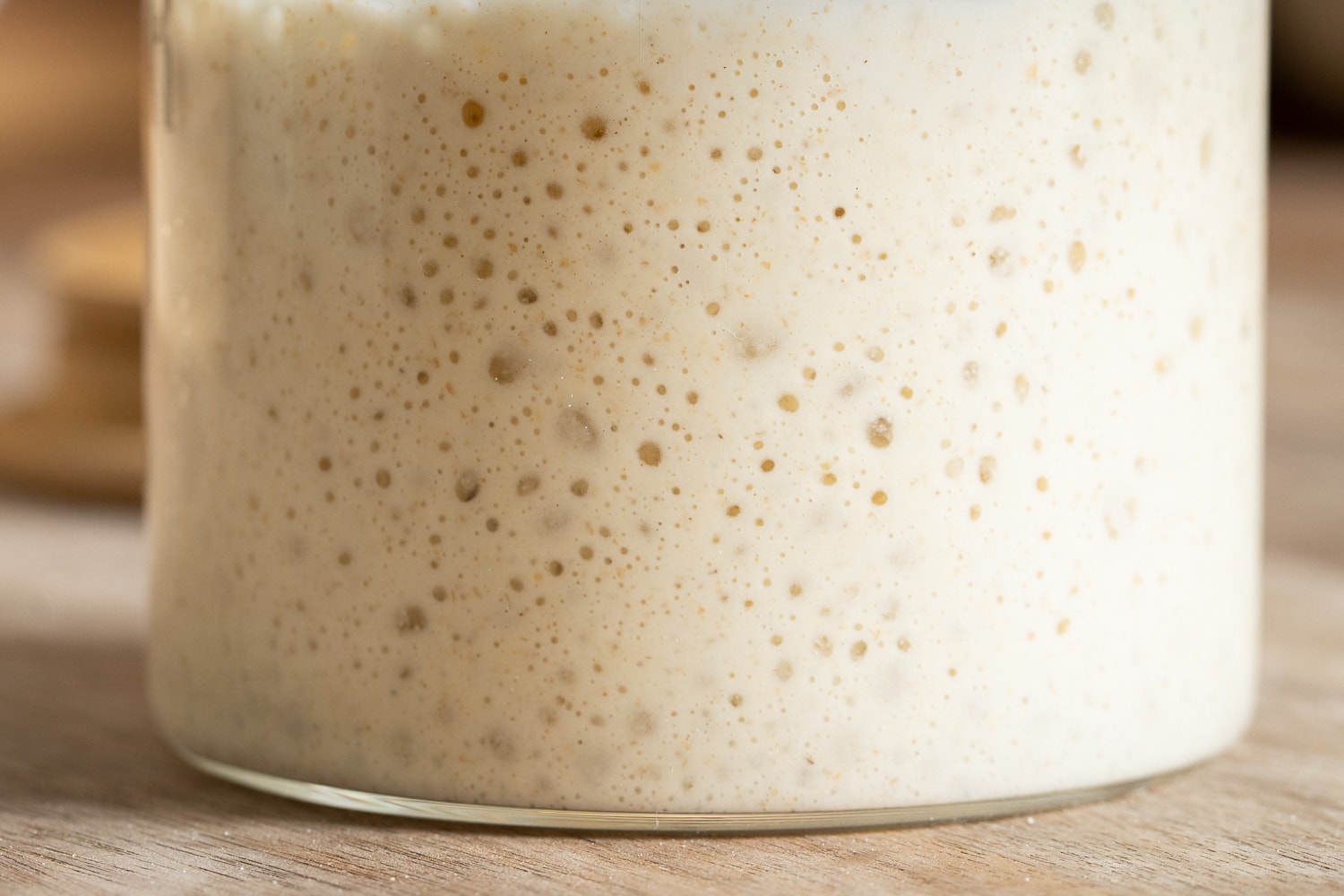
If you look at the top of the jar, you may see a few bubbles, but the best thing to look for is that a crease is starting or has started.
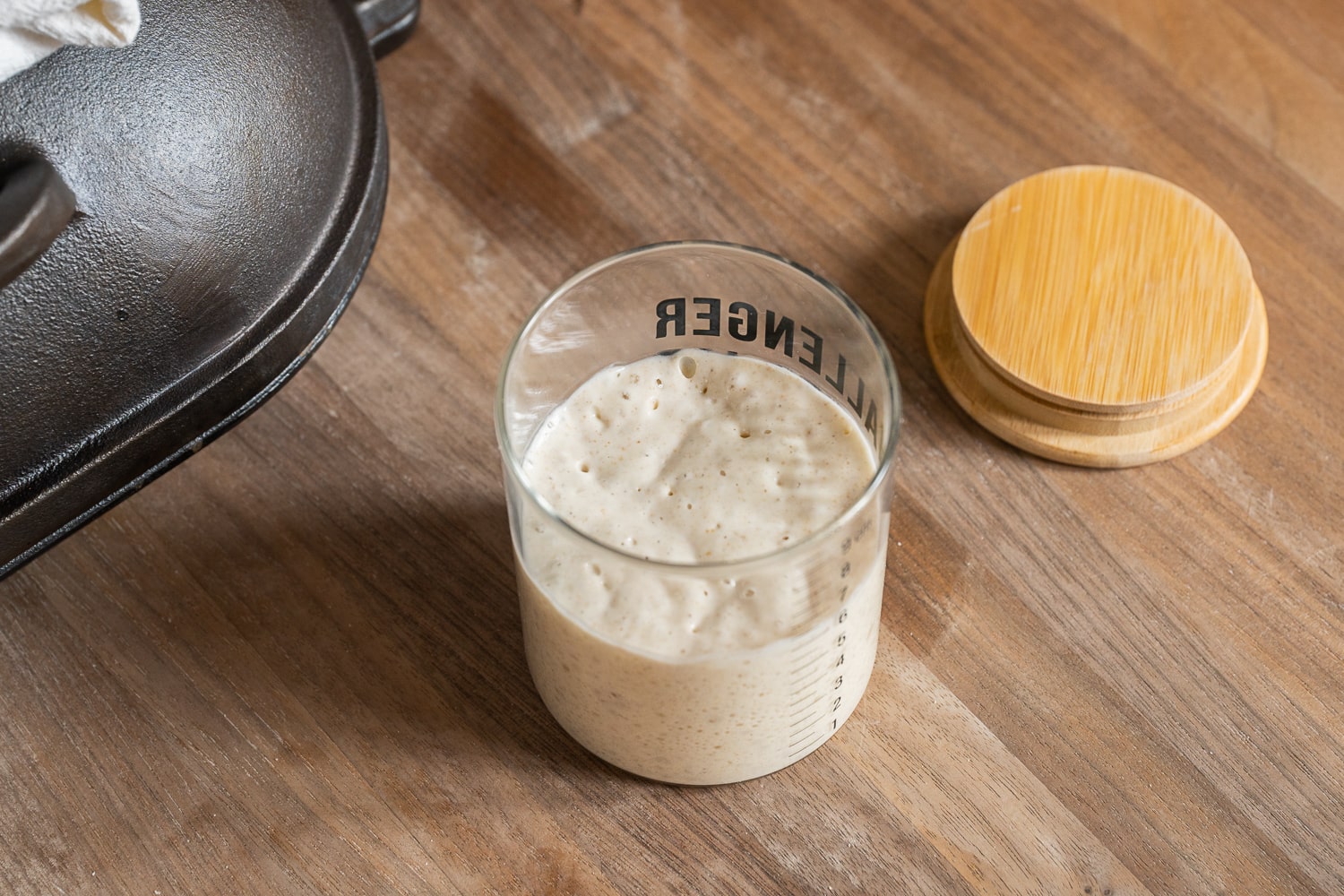
One of the things that you’ll notice if your starter has indeed run out of food is that it’ll start receding and leave some residue around the jar.
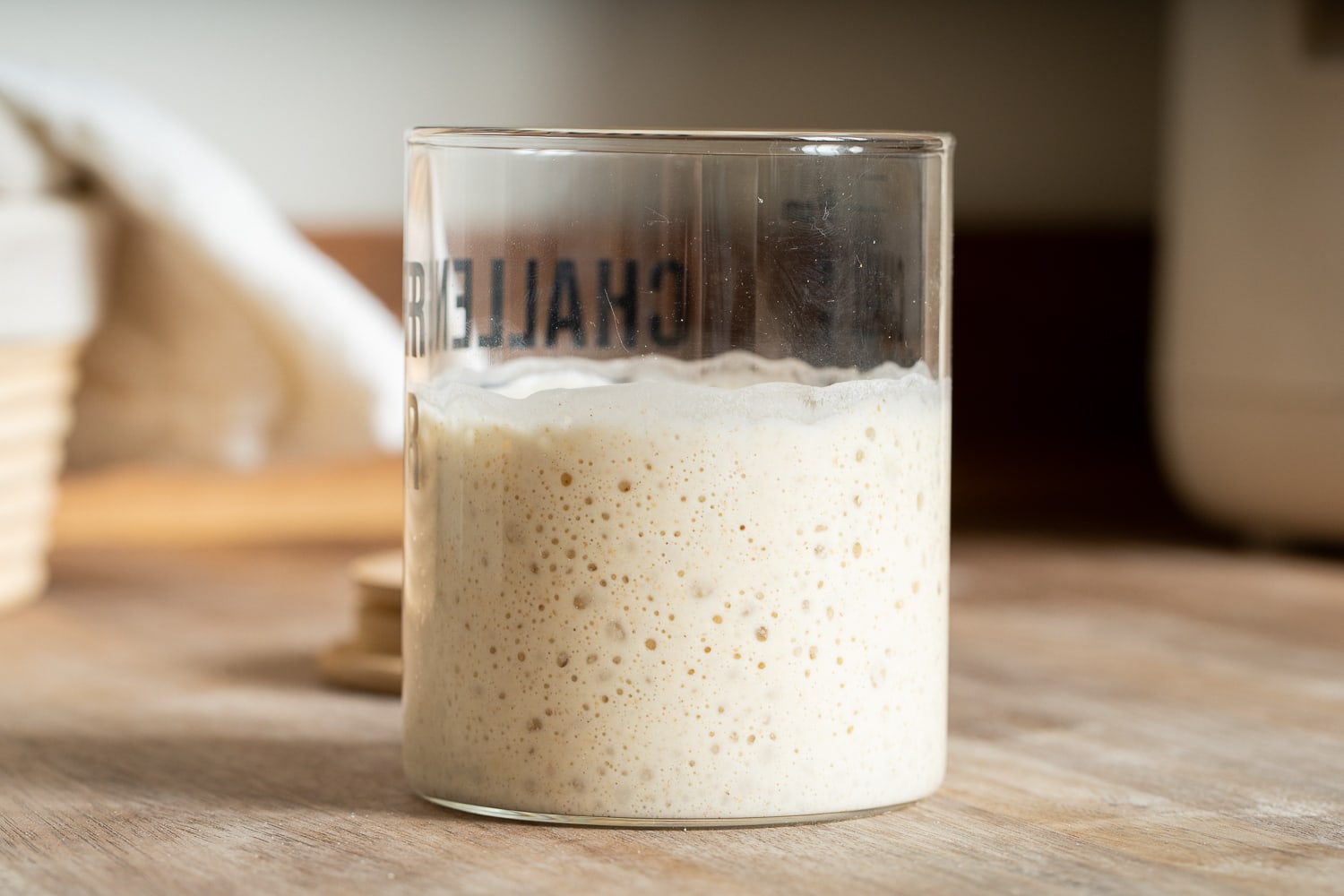
You can also do a little Float Test for yourself. Before you stir your starter, drop a spoonful of it into a Starter Jar half filled with water. If the teaspoon of starter floats, then it is ready to be used in your dough.
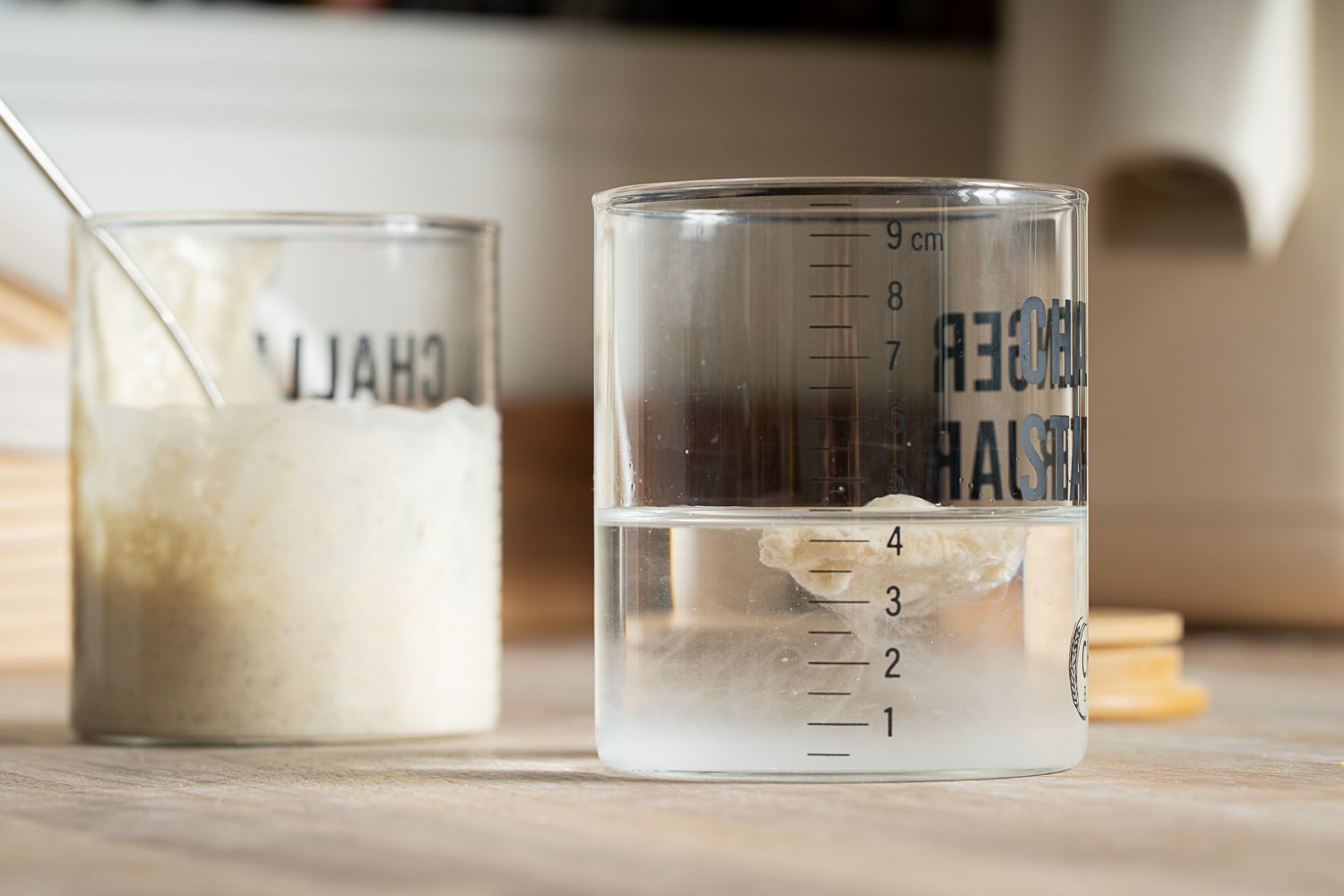
Don’t forget to use your nose with your starter too, even your tongue. You should smell and even taste your starter regularly, and you should do it at all stages of its growth. When it’s growing and nearing its peak, it will have a little tartness to it, maybe even subtly sweet. Some bakers think it has a somewhat cheesy smell and taste to it. As it begins to peak and recede, you’ll start noticing a more acidic or vinegary smell. This smell will continue to get stronger as your starter goes past its peak.
US$299.00
US$25.00